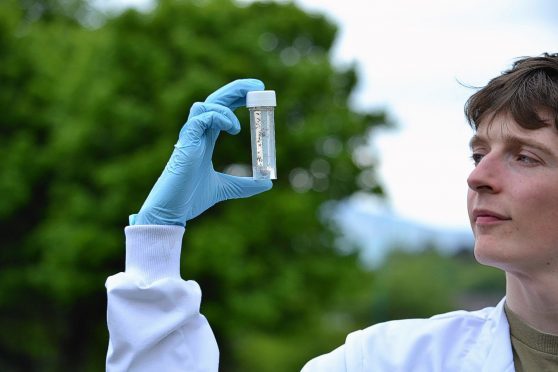Just when you thought it was safe to enjoy the north of Scotland scenery, the odds seem stacked against you.
Scientists have calculated the total number of midges in the Highlands and Islands for the first time, after fearing their original sums did not come up to scratch.
The result is an estimated – and astonishing figure – of 44.8million biting beasties for every resident in the region.
With the season’s first midge hatch imminent, leading expert Alison Blackwell and her team are forecasting bumper numbers.
Ms Blackwell, who runs the official Scottish Midge Forecast, has calculated there are 139 billion midges in the region – half of them females. Only the female midge bites but not all make it to “biting point.”
It means the number of midges seeking a “blood meal” over the summer stands at about 21billion.
Ms Blackwell, director of Dundee-based APS Biocontrol Ltd which manufactures the anti-midge repellent Smidge, said she was concerned that previous calculations of one square metre containing about 500,000 of the insects were wrong.
She concentrated her research on the Highlands and Islands, where most midges are found. She also worked her calculations on the key “midge rich” area.
She said: “I’ve believed for some time that 500,000 midges per square metres was wrong as an average. After some tests, we decided to work a more realistic average of 2,000 midges per square metre.
“The good news for residents is that the vast numbers of tourists coming to the area will lessen the odds of being bitten, by a few million or so. But this season is looking good for midge numbers.
“The mild winter would have promoted survival of the wintering larvae and the current warm weather – on the west at least – will be encouraging the first midges to emerge.
“It’s been very dry though which midges don’t like. Some rain is forecast, so I’d predict that we’d see the first significant numbers of midges during the final 10 days of May.”
The Scottish Midge Forecast revealed that the northwest recorded a 21% increase in midges. But there was a 6% fall in midge numbers around the other main recording area of Argyll.
The contrast was attributed to localised weather patterns.
